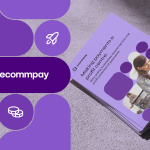
Running a business, in today’s economy, requires constant funding, which often leads to significant amounts of debts. According to statistics offered by the U.S. Small Business Administration, about 50 percent of the small-scale businesses tend to fail within the first five years, primarily because of insufficient capital and poor credit management practices causing too much debt.
Borrowing surely makes sense when it is necessary to boost up the cash flow. Startups and SMBs faced a particularly challenging time over the last few years due to the recent economic downtrends. To keep business operations going, most of these companies ended up taking loans, which soon spiraled out of control and landed them in a debt trap.
How to manage debt?
When you observe the debt related struggles of small businesses, you are bound to wonder whether they could have avoided the situation by taking better financial decisions. Yes, it is possibly so. However, once creditors are making noise at the door, it is too late to perform a retroactive analysis of the finances.
In such cases, small business owners have two ways to deal with debt:
- Save the business by attempting to settle the outstanding debts through various debt relief methods.
- Let the business fail, but with a proper exit strategy to minimize the adverse financial consequences.
How to save the business through debt relief?
There are ways to mitigate the pain of debts by seeking various debt relief options. You can try out some short-term tactics by ensuring long-time payoffs.
- At first, cut costs
If you cannot salvage the situation with your personal savings, you have to identify areas to reduce operational costs and divert capital flow. It may be possible to lease the space which is unused or sell some office equipment to raise some quick funds. On the other hand, firing employees may not always be a welcoming option as they may be necessary to keep your business running.
- Contact suppliers and customers
It is necessary to stay connected with all your vendors and buyers to find a way to enhance your exposure and business model. It may help you increase revenue and ultimately profit. Introduce some smart ways such as offering markdowns if it allows quicker payments or in a lump sum. Try to get some discounts and payment relaxations from the suppliers too.
- Keep in touch with creditors
Ignoring lenders is a common mistake that many debtors make, and it makes things worse over time. Remember, it is not just in your interest to get your out of debt fast, but the creditors may also be able to help you out with more practical solutions such as lowering interest rates, increasing your length of repayment, or restructuring the repayment terms.
Running a business, in today’s economy, requires constant funding, which often leads to significant amounts of debts. According to statistics offered by the U.S. Small Business Administration, about 50 percent of the small-scale businesses tend to fail within the first five years, primarily because of insufficient capital and poor credit management practices causing too much debt.
Borrowing surely makes sense when it is necessary to boost up the cash flow. Startups and SMBs faced a particularly challenging time over the last few years due to the recent economic downtrends. To keep business operations going, most of these companies ended up taking loans, which soon spiraled out of control and landed them in a debt trap.












